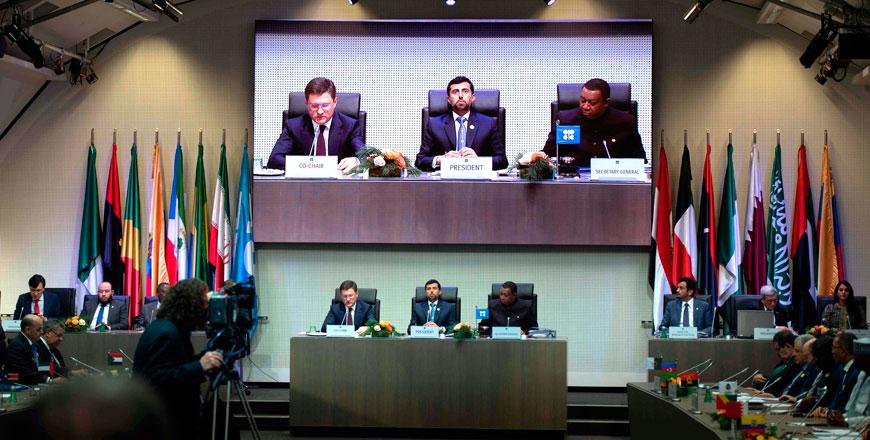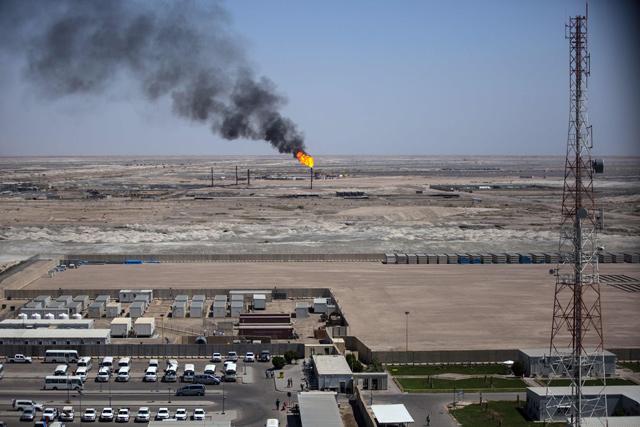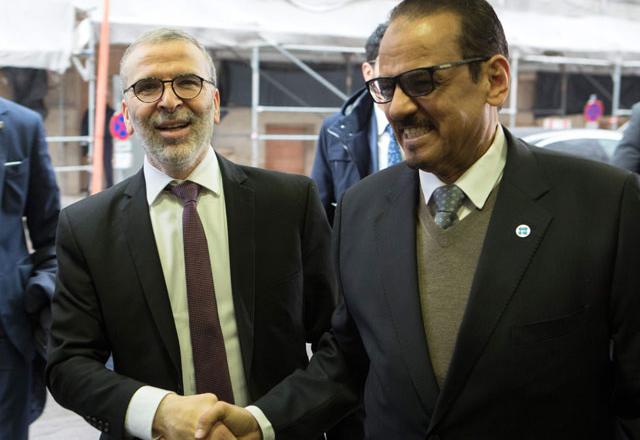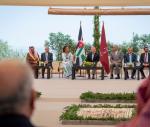You are here
Oil output cuts, OPEC’s double-edged sword
By AFP - Mar 04,2020 - Last updated at Mar 04,2020

Left to right: Russian Minister of Energy Alexander Novak, OPEC President UAE Energy Minister Suhail Al Mazrouei and OPEC Secretary General Mohammed Sanusi Barkindo of Nigeria speak during a ministerial level meeting during the 175th OPEC Conference on December 7, 2018 in Vienna, Austria (AFP file photo)
LONDON — As ministers from the cartel of the Organisation of the Petroleum Exporting Countries (OPEC) gather in Vienna for an extraordinary meeting to mull current market conditions, they must reckon with potential side-effects of pushing for more cuts.
At their last meeting in December, ministers decided on cuts of 500,000 barrels per day, shared out between OPEC members and allies in the so-called OPEC+ grouping.
OPEC kingpin Saudi Arabia took on a third of the cuts at 167,000 barrels, and said it would add a reduction of 400,000 more barrels a day on a “voluntary” basis.
That dwarfed the three next biggest contributions combined, from the United Arab Emirates (60,000 barrels), Kuwait (55,000) and Iraq (50,000).
Russia, the biggest producer of the OPEC+ group, agreed to a modest cut of 70,000 barrels even though Russian production levels have been slightly higher than Saudi Arabia’s.
Cuts ‘headache’
Beyond the stated level of cuts, OPEC’s credibility rests on the commitment of member states to follow through on them, as seen by Saudi Arabia’s scolding of members who have exceeded their quotas, such as Nigeria and Iraq.
But a policy that relies too heavily on production cuts might reveal one of the bloc’s weaknesses.
With non-members, particularly the United States, showing no let up in the amount that they are producing, a further cut runs the risk of reducing the bloc’s share of the global market.
“Deeper production cuts are a headache for OPEC, which has seen its market share falling to a historical low of 35 per cent recently,” says Ipek Ozkardeskaya, senior analyst at Swissquote Bank.
Moreover, not all members have been joining the effort where cuts are concerned: Iran, Venezuela and Libya have exemptions due to various political and economic crises which mean that output has in any case been falling already.
Iran, reeling under the effect of re-imposed US sanctions, has seen its output drop by 40 per cent in two years.
Libya has seen a tenfold fall in production in recent weeks owing to a blockade launched by forces loyal to military strongman Khalifa Haftar in the east of the country.
But the prospect of Libya regaining a normal level of output, or Venezuela and Iran overcoming their crises, is not without problems for OPEC either.
Unless there was a concurrent uptick in demand, OPEC would be forced to consider yet more cuts — and overcome the rows that would almost certainly be sparked by considerations of how to share them out fairly among members.
Related Articles
DUBAI — Top oil producers will consider fresh output cuts at a meeting this week, but analysts are doubtful they will succeed in bolstering
VIENNA — Members of the Organisation of the Petroleum Exporting Countries (OPEC) cartel and its allies failed to reach a deal on oil product
LONDON — Iran has told OPEC that it opposes delaying the oil producer group's next meeting, setting the scene for another fight with fellow
















